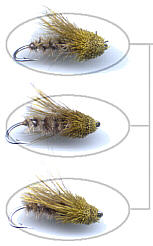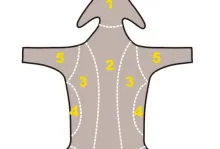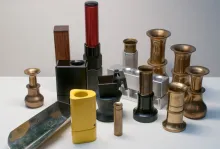It should be no secret that I'm a great fan of muddlers. These functional, characteristic and very beautiful flies that I connect directly with my favorite kind of fishing: night fishing for sea trout in the ocean. The technique used for tying them has always fascinated me, and although I do tie a lot of them, I still have a lot to learn in respect to spinning deer hair.
| Small Polar Muddler |
 |
It should be no secret that I'm a great fan of muddlers. These functional, characteristic and very beautiful flies that I connect directly with my favorite kind of fishing: night fishing for sea trout in the ocean. The technique used for tying them has always fascinated me, and although I do tie a lot of them, I still have a lot to learn in respect to spinning deer hair.
 |
Full Metal Jacket Nutria Muddler |
My first fly
My view might be strongly biased by the fact that my first fly ever was a muddler. It was not exactly a beautiful and functional muddler - actually not even a beautiful and functional fly - but it wound up in my then very skinny fly box. I remember struggling with the deer hair of which I had bought a small patch, and not being able to spin it at all. I have since learned the art from none less than Chris Helm and with some practice (a lot of practice, to tell the truth), I now feel more confident with muddlers.
Muddlers are floaters
Because of the deer hair head most muddlers are floating flies. The deer hair is - contrary to the common conception - not hollow. It is more like an air filled sponge and each hair holds a lot of air. This air helps the deer keep warm in the winter, but also helps the deer hair fly to float.
Packing the hair tightly on the hook shank will give your fly a head that floats well. The ability will diminish when you have fished the fly for a while as the hair get water logged. Still the fly will float high - if not in the surface then just under.
 |
Salt Water Caddis |
Many flies
I tie and fish muddlers in many shapes. This page just shows a few of them.
The original was tied on stainless hooks and I sent a couple to a friend in Florida. His mail, shown here to the right, tells that the fly can do good for other species too.
Hand picked for this article
- Log in to post comments













